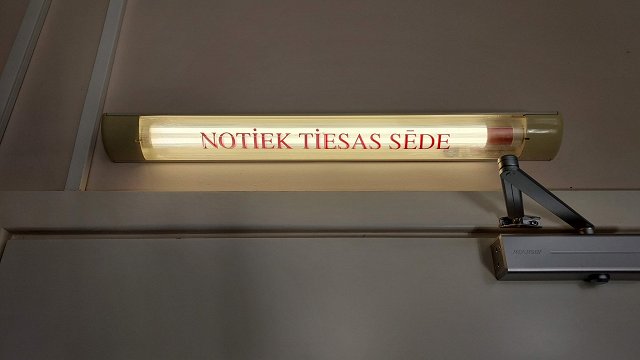At the end of February, a window of the Museum of the Occupation was smashed with a hammer and Molotov cocktails were thrown into the director's office. A few days later, the alleged perpetrators were detained and arrested. They had a previous drug-related criminal record.
The alleged arsonist is Valentīns Razmerica. He allegedly agreed to Vitālijs Lukjanovičs' offer to throw a Molotov cocktail into the museum. The crime was supported by Lukjanovičs' wife, Marija Dzene.
De Facto has received unofficial information confirming that the attack may have been organized from the prison using the mobile communication application Telegram. In mid-April, the State Security Service (VDD) carried out investigative activities in Daugavgrīva prison in Daugavpils. It is suspected that one of the inmates used Telegram to ask Lukjanovičs to find individuals who could attack the museum for money.
"Unfortunately, I cannot comment on these events in any detail, but as far as the problem of communication means getting to prisoners is concerned, this is not a new phenomenon. It is a reality elsewhere, too. It has to be fought," said Minister of the Interior Rihards Kozlovskis (New Unity).
The VDD confirms that the investigation into the incident has revealed new circumstances. Therefore, a new criminal procedure has been separated from the State Police investigation and taken over by the VDD.
"Criminal procedural actions in Daugavgrīva Prison were carried out within the framework of this criminal proceeding on suspicion of organizing intentional damage to other people's property and providing assistance to Russia in a group of persons acting against the Republic of Latvia," the VDD said in a written reply.
Statistics show that the illegal circulation of telephones in prisons remains a problem.
The Prison Administration also acknowledges this in a written reply. Last year, 1,746 mobile phones were seized from prisons, and in the first three months of this year - 452.
The Telegram communication site has been increasingly used in Russia in recent years to recruit potential spies and vandals. According to the VDD analysis, Russian special services use the platform to directly approach individuals, offering to perform certain tasks in exchange for money. Cases have been documented of vague initial offers to perform various "simple tasks" for a fee in advertisements and other types of Telegram communication groups.



























